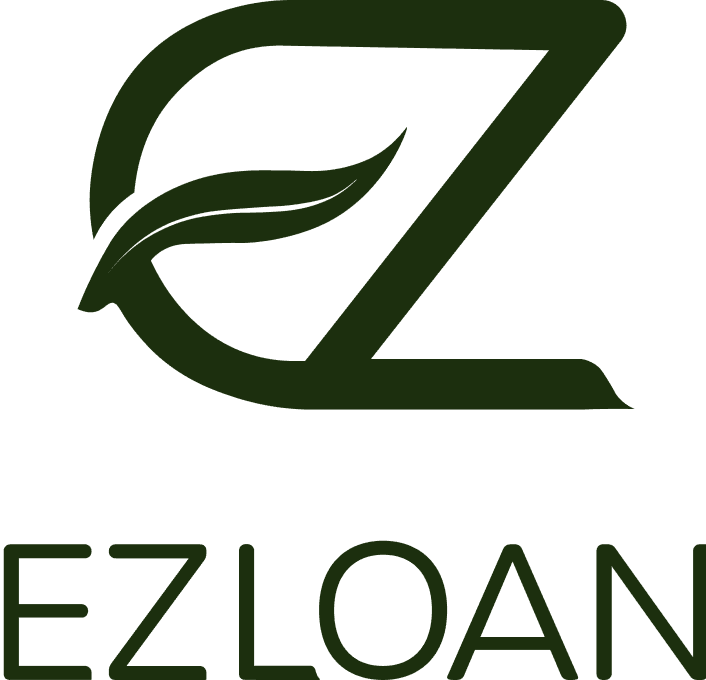Bridging Loans In Singapore
Updated: 23 Sept 2025
Written bySingSaver Team
Team

The information on this page is for educational and informational purposes only and should not be considered financial or investment advice. While we review and compare financial products to help you find the best options, we do not provide personalised recommendations or investment advisory services. Always do your own research or consult a licensed financial professional before making any financial decisions.
For Singaporean homeowners upgrading or relocating, a bridging loan lets you secure your next home before your sale proceeds (and refunded CPF) come in. This guide explains what a bridging loan is, how it works in Singapore, the pros and cons, and the main alternatives.
What is a bridge loan?
A bridging (bridge) loan is a short-term facility that covers the upfront costs for your new property while you wait for the sale proceeds from your current one.
In Singapore, banks use bridging loans to plug timeline gaps — for example, when upgrading from an HDB flat to a private property or when completion dates don’t align. Approval typically requires a valid Option to Purchase (OTP) for the new place and evidence that you’re selling your existing home.
Key things to know about bridging finance:
-
Short-term loan for buying before selling property.
-
Typically up to 6 months via Singapore banks.
-
Useful for HDB to private property upgrades.
-
Requires OTP and proof of intent to sell.
What to know about bridging loans in Singapore
That’s common, but it isn’t a hard cap. The real limit is tied to your confirmed sale proceeds and CPF to be refunded.
If your proceeds are sufficient, you can often borrow the full amount you need for completion — and in some cases use the structure to secure a lower loan-to-value (LTV) ratio on your new mortgage, reducing long-term interest costs.
How does a bridge loan work?
In Singapore, bridging loans are secured against your existing property. Repayment typically happens once your current home is sold.
Two common repayment structures:
-
Capitalised interest loan: Interest is accumulated and repaid together with the principal after your property sale.
-
Simultaneous repayment loan: You service both your existing home loan (if any) and the bridging loan monthly until the sale completes.
Available bridging loans in singapore
Comparing bridging loans isn’t just about the headline rate. Look at the effective interest rate (EIR), total fees, and how fast funds are disbursed — all of which affect your real cost and cash flow.
What to compare at a glance
-
Rate vs Effective Interest Rate (EIR): EIR reflects admin/processing fees and repayment schedule — use this for apples-to-apples comparisons.
-
Tenure & repayment style: Up to approximately 6 months. Check if interest is capitalised (paid at the end) or serviced monthly.
-
Fees & charges: Processing fees, early repayment penalties, and late charges can move the needle.
-
Loan size & eligibility: Minimum/maximum amounts, income and credit score requirements, and whether sales proceeds are sufficient.
-
Disbursement speed: Useful if you’re racing an OTP timeline or completion date.
-
Flexibility: Any prepayment options or extensions if completion is delayed.
-
Promotions/Rebates: Bank promos or SingSaver rewards can lower your effective cost.
Eligibility and documents required
Because a bridging loan is short-term in nature, banks assess both your repayment ability and your property sales proceeds before approval. Here’s what you’ll need to know.
Eligibility
-
Open to Singapore Citizens, Permanent Residents, and eligible foreigners who are selling a property in Singapore.
-
Applicants should already have an OTP for their new property.
-
A healthy credit score and proof of stable income will strengthen your chances of approval.
Documents required
-
Option to Purchase (OTP): Confirms your legal right to buy the new property.
-
CPF withdrawal statements: Show how much of your CPF funds are tied up in the current property.
-
Outstanding loan statements: From your existing mortgage to determine net sales proceeds.
-
Personal income documents: Such as payslips or Notice of Assessment, depending on bank requirements.
Having these documents ready speeds up the approval process and ensures you can access funds quickly when securing your next home.
Best fixed deposit rates in Singapore (2025)
Short tenures, low effort, guaranteed returns. We’ve rounded up the best promos so you don’t miss easy interest.
Fees and charges
Bridging loans come with additional costs beyond interest:
-
Late payment fees: 3%–5% of outstanding amount.
-
Processing/admin fees: One-time charge, varies by bank.
-
Early repayment fees: Penalties may apply if settled before maturity.
Pros and cons of bridge loans
Pros
Allows Singaporean buyers to quickly secure a new property without waiting for their current home to sell
Helps avoid the hassle and expense of temporary accommodation during property transitions in Singapore
Useful for aligning different timelines when selling an HDB flat and buying private property
Cons
Comes with higher interest rates compared to standard home loans in Singapore (around 5–6% p.a.)
The short repayment timeframe (typically up to 6 months) can be challenging if your property sale in Singapore is delayed
Availability is limited to certain banks in Singapore, and eligibility criteria can vary
How to use a bridging loan in Singapore to lower your LTV ratio
Scenario: You’re upgrading to a S$1,000,000 condo. With a 75% LTV, your mortgage is S$750,000, and you need S$250,000 for downpayment (S$200,000 non-cash + S$50,000 cash). You expect S$500,000 in sales proceeds from your HDB.
-
Step 1: Take a bridging loan of S$200,000 + pay S$50,000 cash. Mortgage covers the rest. Once your HDB sale completes, repay the bridging loan, leaving S$300,000 excess.
-
Step 2: Choose how to use the excess:
-
Option A: Keep S$750,000 mortgage and make a lump-sum repayment later.
-
Option B: Use bridging loan to reduce upfront borrowing to S$450,000 (45% LTV).
Is taking a bridging loan in Singapore a good idea?
At first glance, the decision might seem simple: if you don’t have enough cash to cover your downpayment, you’ll need a bridging loan. But the reality is more nuanced. Beyond just covering the gap, you should think about whether this financing option truly benefits your situation.
Here are four key questions to guide your decision:
1. Why do I need a bridging loan?
Most borrowers use a bridging loan to cover the downpayment for a new property before the sales proceeds from their old one come in. But there are different scenarios:
-
En bloc sale: If your property is sold quickly, you may need a bridging loan to secure your next home fast. Since en bloc proceeds are usually large, the short-term interest may be manageable.
-
Selling after renovations: Renovations might have drained your cash reserves. In such cases, a renovation loan could be cheaper than a bridging loan if you only need smaller financing.
-
Upgrading to a new home: The classic case for bridging loans, where you need funds temporarily until the old property is sold.
Personal loans in Singapore: A 7-step guide
Cut through jargon with a clear, actionable pathway. Compare EIRs, dodge extra charges, and pick the loan that fits your budget.
2. Do I have enough CPF or cash savings?
If you have enough in your CPF Ordinary Account (OA), you may not need a bridging loan at all. CPF funds come with much lower costs than bank loans. Borrowers sometimes still choose bridging loans to preserve liquid cash for emergencies — but if your CPF can fully cover the downpayment, use that first.
3. What will the bridging loan cost me?
While bridging loans carry higher interest rates, the short tenure (typically six months) keeps costs limited. For example, borrowing S$300,000 at 6% p.a. over six months would cost about S$9,000 in interest. It’s not trivial, but compared to the value of a property purchase, it may be acceptable. Always check the EIR and account for extra fees like processing charges or late payment penalties.
» MORE: What is the Effective Interest Rate (EIR) in a loan?
4. What happens if my property sale falls through?
This is the biggest risk. If your old property sale falls through, you could be left with two housing loans to service. Before committing, review your bank’s “exit clauses” — some may impose penalties or restrict repayment terms. It’s better to clarify upfront than be caught unprepared.
Think of a bridging loan as a safety net, not a default choice. If you can cover the downpayment through CPF savings or existing funds, that’s often cheaper. But if timing gaps make it necessary, weigh the costs and risks carefully before deciding.
Alternatives to bridge loans
While bridge loans can be helpful, there are alternative financing options to consider for your property transition in Singapore:
-
Home equity loan: Borrow against a fully/partly paid property.
-
Personal loan: Fast approval but higher interest.
-
CPF Housing Grant / HDB Contra Facility: Ideal for HDB upgraders.
-
Bank overdrafts: Useful for short-term cash flow, but costly.
The bottom line
A bridging loan in Singapore helps homeowners secure a new property before receiving sales proceeds from their current one. It’s a short-term solution that offers flexibility, but comes with higher interest rates and a strict repayment period.
If you have sufficient CPF savings or cash, you may not need a bridging loan. But when timing gaps arise, it can smooth the transition and even reduce your loan-to-value (LTV) ratio. Just be sure to compare options, review fees, and have a clear repayment plan in place.
Frequently asked questions about bridging loans in Singapore
A bridging loan covers your new property’s downpayment while waiting for sales proceeds. It’s secured against your existing property and usually repaid within six months.
Rates range between 5%–6% p.a. in 2025, depending on the bank. The short tenure keeps total borrowing costs contained.
Not directly. CPF funds can’t be used to service a bridging loan. Once your sale completes and CPF money is refunded to your OA, you can apply it to your new property’s completion costs (e.g., downpayment or housing loan), which effectively clears or reduces the bridging amount.
Relevant articles
About the author
SingSaver Team
At SingSaver, we make personal finance accessible with easy to understand personal finance reads, tools and money hacks that simplify all of life’s financial decisions for you.















